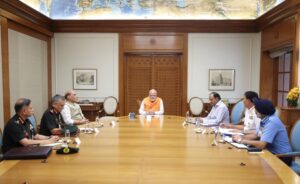Chandrayaan 3’s success will propel international commercial contracts: Ex-ISRO chief Madhavan Nair
Thiruvananthapuram, Aug 24 (PTI) Chandrayaan 3’s success will further boost India’s international commercial contracts as there will be acceptance of its technical competence and launch systems, former ISRO chief G Madhavan Nair said here on Thursday.
Nair said the success of Chandrayaan-3 is the first stepping stone to begin India’s planetary explorations.
“We have really broken the ice and made a good beginning,” he told PTI.
The former ISRO Chairman said the country already has several commercial contracts with Europe and America, and this will grow now with the success of the third lunar mission on August 23.
“Certainly the global people will accept our technical competence and quality of our launch system and spacecraft, etc. International cooperation has been on the agenda of the Indian space programme, and it will be strengthened in the days to come,” he added.
The total cost of Chandrayaan-3, according to ISRO, is Rs 615 crore, which is almost equivalent to a Hindi cinema’s production budget.
In a giant leap for its space programme, India’s Moon mission Chandrayaan-3 touched down on the lunar south pole at 6.04 pm on Wednesday, propelling India into an exclusive club of four and making it the first country to land on the uncharted southern pole of the Moon.
Nair contended that the scientists at the space agency have achieved this historic success by getting a salary one-fifth of their colleagues in the developed world.
According to him, the low wages for the scientists at ISRO is one of the reasons why they could find low-cost solutions for space exploration.
“The wages paid to the scientists, technicians, and other staff at ISRO are hardly one-fifth of what is given globally. So that gives an advantage,” he said.
He claimed there are no millionaires among ISRO scientists, and that they always live a very normal and subdued life.
“They are not really bothered about the money but are passionate and dedicated to their mission. That is how we achieved greater heights,” Nair said.
He said the scientists at ISRO could achieve this through careful planning and long-term vision.
“We tried to build one upon the other. What we learnt in the past, we used for the subsequent mission. In fact, what we developed nearly 30 years ago for the PSLV (rocket) is the same engine that is being used for the GSLV as well,” Nair said.
He said India uses home-grown technology for its space missions, and that helped them reduce the cost considerably. The space mission costs of India are 50 to 60 percent lower compared to those of other countries.






